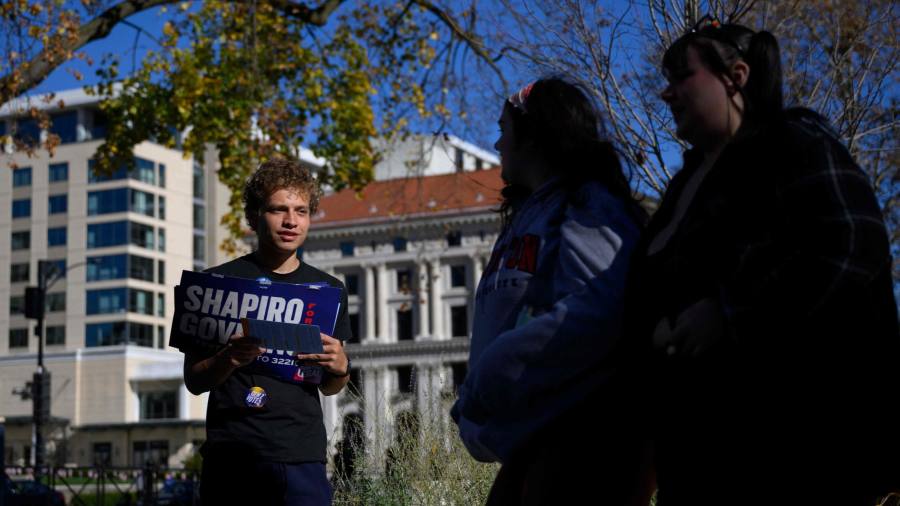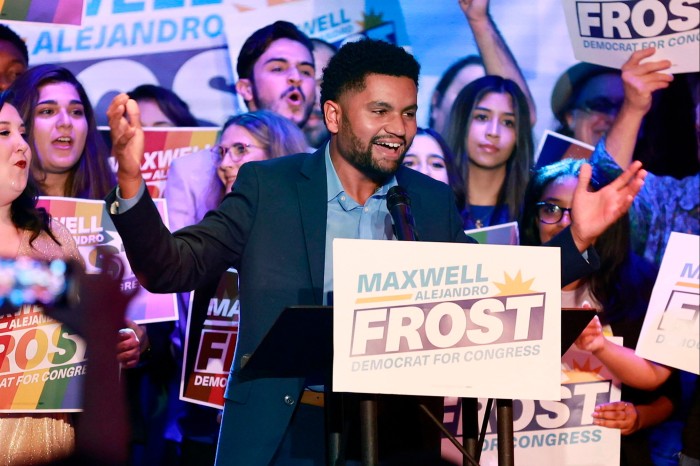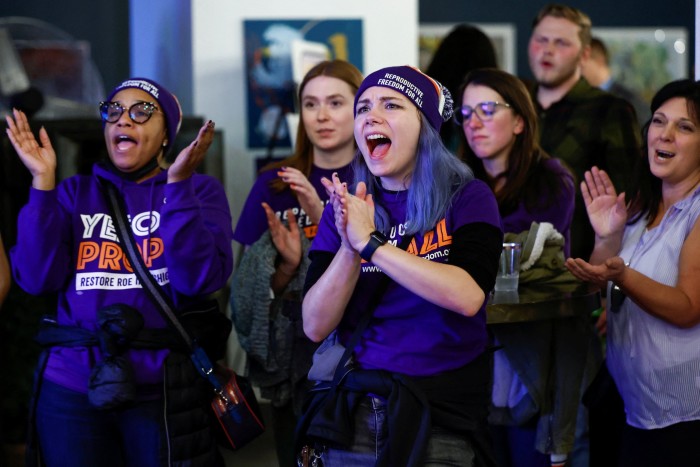
As Jack Lobel canvassed the opinions of young Americans last month, he realised how fired up they were to vote in the US midterm elections — and how much politicians and pollsters had underestimated their potential turnout.
“We did a poll of college students in October and found 67 per cent said they were definitely going to vote,” he said. “I just thought, ‘Wow!’ It was much higher than we were expecting.”
Lobel is a spokesperson for Voters of Tomorrow, one of several youth voter groups that worked to boost turnout among 18- to 29-year-olds and may have saved the election for the Democrats.
With votes still being counted on Friday, control of both houses of Congress hangs in the balance. But the result was a far cry from the “red wave” of sweeping Republican victories that many pundits predicted.
Speaking the day after Tuesday’s vote, US president Joe Biden said: “I want to thank the young people of this nation, who I am told . . . voted in historic numbers again, just as they did two years ago.”
Some 27 per cent of 18- to 29-year-olds voted in this election, according to polling data — the second highest turnout on record for a midterm election, according to analysis by Tufts University.
This age group heavily backed the Democrats, by two to one, and appears to have been decisive in several races.
In Georgia, Raphael Warnock would have lost his Senate race decisively to his Republican opponent Herschel Walker without 116,000 votes from 18-29 year-olds, the Tufts analysis found. In Arizona, where counting has not yet finished, the Democrats’ Katie Hobbs has a slim lead in the gubernatorial contest over Republican Kari Lake thanks to more than 400,000 votes from young people.
“The big risk for the Democrats throughout this entire election cycle was that young people and black voters would stay at home,” said Chris Jackson, senior vice-president at polling company Ipsos. “Those are the two pillars of the Democratic base and they both showed up on Tuesday.”
Campaigners say younger voters were motivated by several issues. Principal among them was the Supreme Court’s decision in the summer to overturn Roe vs Wade, the legal decision that enshrined the constitutional right to an abortion. Three-quarters of voters under 30 believe abortion should be legal, according to polling by Pew Research.
But other issues also played a role. Many benefited from Biden’s decision this year to cancel a large portion of outstanding student debt. That decision was struck down as illegal by a Trump-appointed federal judge on Thursday night, though the administration plans to appeal.
Others said they were impressed by the climate change aspects of the Inflation Reduction Act, which came into effect in August. Biden’s order pardoning thousands of people convicted of marijuana possession under federal law also played a role.
“The Biden administration has done really well in getting moving on issues that are very important to young people, whether that is climate, student loans or marijuana,” said Quentin Wathum-Ocama, the president of Young Democrats of America.
Lobel said that for him and many of his friends, several issues came together — from school safety to climate change and reproductive rights — to give them a sense of political danger. “Gen Z [the cohort born between the mid-1990s and early 2010s] is under attack in so many different ways,” he said. “Our rights and our safety are being threatened.”
In several states, young people were also motivated to turn out to vote on separate state legislation, such as to guarantee abortion access, raise the minimum wage or protect voting rights.
Many Democratic campaign groups used technology to target younger voters. John Fetterman, the incoming Democratic senator for Pennsylvania, ran an effective social media campaign that often poked fun at his Republican rival Mehmet Oz. Survey data from AP VoteCast suggests 58 per cent of 18-29 year-old voters backed Fetterman, compared with 39 per cent who supported Oz.
Eve Levenson, a Democratic youth organiser, said peer-to-peer texting campaigns, in which campaigners text their friends en masse, had helped reach younger people. “Young voters do not like to answer their phones to unknown people, and they are more likely to respond to texts,” she said.
But she said traditional door-knocking had also proved crucial. “Social media efforts were great, but a lot of young people feel overwhelmed by technology, especially after the pandemic,” said Wathum-Ocama. “For them, it really made a difference to see us in person.”
Some have dismissed talk of a “youthquake”, pointing out that youth turnout was four percentage points lower than the record of 31 per cent in 2018.
Analysis by David Shor, head of data science at the Democratic strategy company Blue Rose Research, shows turnout was lower in counties with younger than average populations than in 2018, and higher in those with older voters. “This was a more Republican electorate if anything, not a more Democratic one,” he said.
But many youth organisers argue 2022 shows that the relatively high turnout among young people seen in 2018 and 2020 has continued, indicating a durable generational shift.
“I heard a lot of pollsters talk about whether young people would show up like they have in recent elections,” said Carolyn DeWitt, president of Rock the Vote, which aims to engage young Americans in politics. “But these results show this is a trend now among Gen Z voters.”
Gen Z now also has its first Congress member in Maxwell Frost, the 25-year-old Democrat elected to Florida’s 10th congressional district.
Lobel, who at 18 cast his vote for the first time on Tuesday, said: “Gen Z are very political, but they are also better connected with each other than any other generation of voters. For that reason, we are a force to be reckoned with.”

